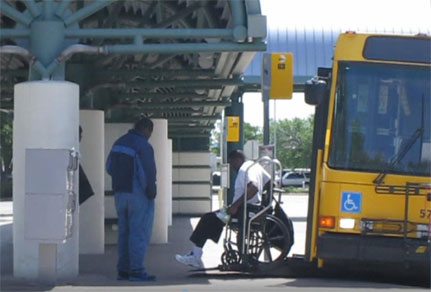Bus Loading Zones
Posted on - Wednesday, September 1st, 2021Section 810.2 Bus Loading Zones
This newsletter will speak about Bus Loading Zones both in the Public Right of Way and inside a property (like a school or other facility).
The bus stop in the above picture does not show the proper requirements for loading and unloading. This newsletter will explain why
The bus stop in the above picture is at a school and appears to have the correct area for loading children with disabilities
Technical Requirements
Bus loading zones must have an area that 96″ long measured perpendicular to the curb or vehicle roadway edge, and a clear width of 60 inches (1525 mm) minimum, measured parallel to the vehicle roadway.
The video above shows why the 96″ long area parallel to the curb is required. The lift mechanism for a wheelchair user to enter and exit the bus requires that amount of space.
If there is a bus shelter there should be a path of travel from the bus shelter to the loading area. The path needs to be a minimum of 36″ wide. There should be an area inside the shelter that is 30″x48″ with a slope of no greater than 1:48
This bus loading zone does not have a 96″ long space parallel with the curb
 Abadi
Abadi 






